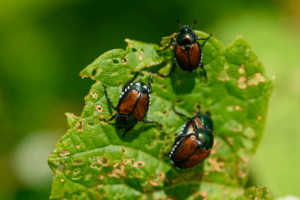What better way to create privacy in your yard than with a tall, thick cedar hedge? Cedars are hardy and can live a long time, between 60 and 80 years. Not very demanding, they are ideal for those who wish to have a beautiful screen of greenery without investing a lot of time. In fact, once properly planted, your cedar hedge will require only the minimum amount of maintenance, leaving you time to admire it and fully enjoy your yard, away from the sometimes curious eyes of your neighbours, all year long!
When planting, be sure to provide your plants with rich, well-drained soil. Cedars can tolerate almost any type of soil, as long as it is not waterlogged. If water tends to accumulate where you plan to install your hedge, you can plant on a mound. Make sure you get plenty of sunlight, hedges perform best in full sun. Your hedge will also grow in semi-shaded areas, but the thickness may be less.
How to plant cedars
- Draw a straight line and make a 60 cm wide by 45 cm deep trench. Mix the removed soil with compost, evergreen fertilizer and mycorrhizae to promote rooting.
- Plant your cedars equidistant from each other, about 1 m apart so that your hedge is thick enough to create the desired privacy, but not too compact to ensure the survival of each cedar at maturity.
- Water well! Regular watering will be very important, especially in the first year. Make it easy on yourself by installing a perforated hose along your hedge.
- Add a good layer of mulch if you wish. Mulch helps keep the soil warmer and moist and blocks weed growth, it’s a valuable ally in the garden.
How to care for your cedar hedge
Watering
This is the key to having a nice, full hedge, especially the first year. Make sure your plants do not run out of water. Once well established, a cedar hedge can tolerate several days without water, but after a week without any rain, it would be better to water the base of the cedars thoroughly. Avoid watering only on the surface, you need to get to the roots deep in the soil. If you have installed a perforated hose, a good hour of watering once a week will suffice.
Fertilization
Since you’ve well fertilized your cedars when you planted them, it is not necessary to fertilize them again the first year. For subsequent years, choose a nitrogen-rich evergreen fertilizer that will help the leaves, named twigs, to be green and strong. Fertilize early in the season, in April, and mid-season, in June. Avoid fertilizing after July; since the plant has already started preparing for winter, you don’t want to stimulate growth that could cause problems in winter.
Pruning
To keep the hedge looking good, it should be pruned annually. Pruning is done in the summer, between late June and mid-September. One third to one half of the new growth can be removed without getting to the old wood. The new growth is the lighter green part. During the first few years, until your hedge has reached the desired height, prune only the sides. A well-maintained cedar can grow from 30 to 60 cm in height each year under good conditions.
Winter Protection
Cedars normally tolerate winter well. If you are in a very strong wind corridor or if your hedge is in the crosshairs of the snowblower, it may be appropriate to protect it with a burlap or geotextile fabric. Make sure the fabric does not touch the branches and remove the protection quickly in the spring.
It’s that simple! By following these few tips, you will have a beautiful, thick and green cedar hedge. Doesn’t it look like it? Perhaps you are infested by a pest such as the cedar leafminer or the spider mite. Insecticidal soap can help you, come and discuss it with us, we can recommend the right treatment for your plants.






